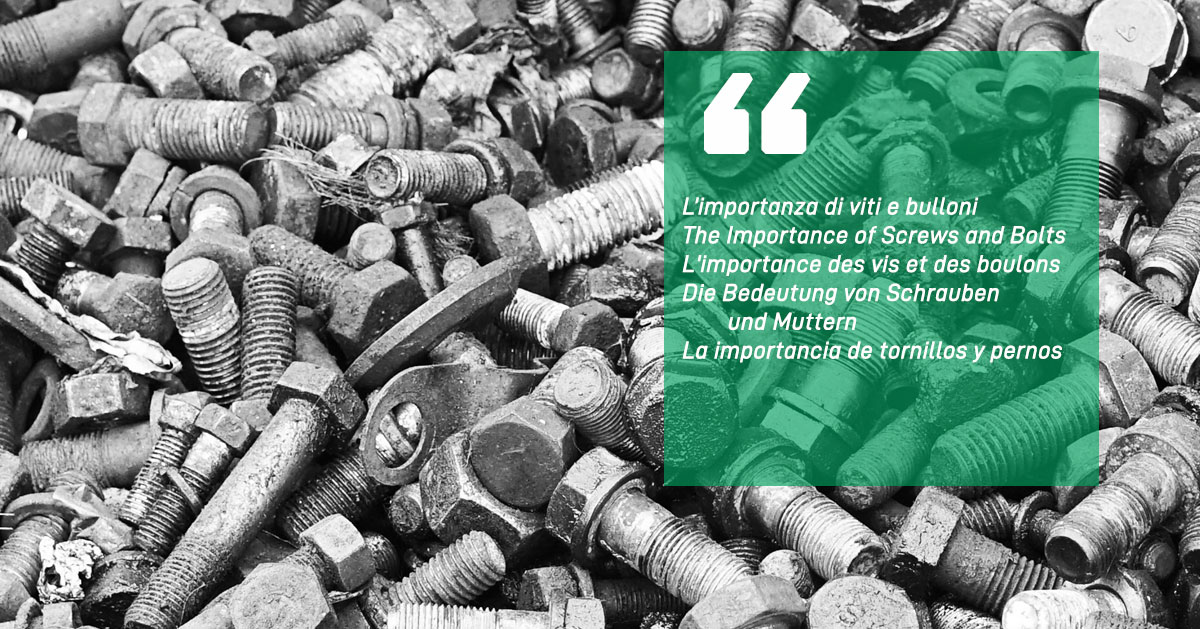
The Importance of Screws and Bolts in the Evolution of Industry and Technology
Despite their apparent simplicity, screws and bolts conceal meticulous design: it took centuries for them to become the objects we know today. These fastening components have played a silent but crucial role in history across a wide range of applications, from constructing buildings to assembling industrial machinery, from railway lines to vehicle assembly, and even in space exploration. With their ability to securely join parts and materials, they facilitated the construction of iconic monuments like the Eiffel Tower and were a catalyst for the industrial revolution, enabling the assembly of complex structures and significantly contributing to the development and construction of the modern world.
Rudimentary versions of what we now know as screws were used in ancient times: Mediterranean civilizations used fastening elements, mainly made of wood, to assemble war machines or to build monumental architectures that have survived to this day. However, the traditionally attributed year for the screw invention is 1568 when the first machinery, albeit artisanal, was made to carve threads. It took another two centuries to reach a true turning point: year 1797, when the British engineer Henry Maudslay patented the first lathe for threading. This invention allowed for the standardization of thread measurements and made nuts and bolts interchangeable. Previously, each bolt corresponded to a single nut, but with standardized threading, every bolt could fit any nut, upon the condition they were of the same size.
The last key step came a few decades later when technological progress allowed the actuation of lathe by external energy instead of manual power. From that point on, productivity soared, enabling mass production and commercialization of screws, bolts, and nuts. These were the years of the industrial revolution, where threaded joints played a fundamental role: by significantly simplifying construction processes, they allowed the assembly of complex machinery and the construction of large-scale infrastructure.
With the advent of the twentieth century, the growing needs for strength and lightness related to technological advancements led to a progressive specialization of threaded components. Their widespread use and increased safety requirements also led to the creation of standards and regulations aimed at making them highly reliable. Today, there are screws and bolts of various types and materials, such as aluminum and titanium alloys, to adapt to the most specialized industrial sectors. Contemporary technologies like computer-aided manufacturing (CAM) have simplified the design and production process, enabling the creation of customized components for advanced needs.
Thanks to a strong and consolidated leadership as the best-stocked warehouse in Italy, VIPA can offer its partner companies a wide range of screws and bolts for any application, even the most specialized ones. Among the over 70,000 references in stock are components of all types and materials, meeting any construction requirement. Visit VIPA shop to explore the catalog and order items that best suit your needs.